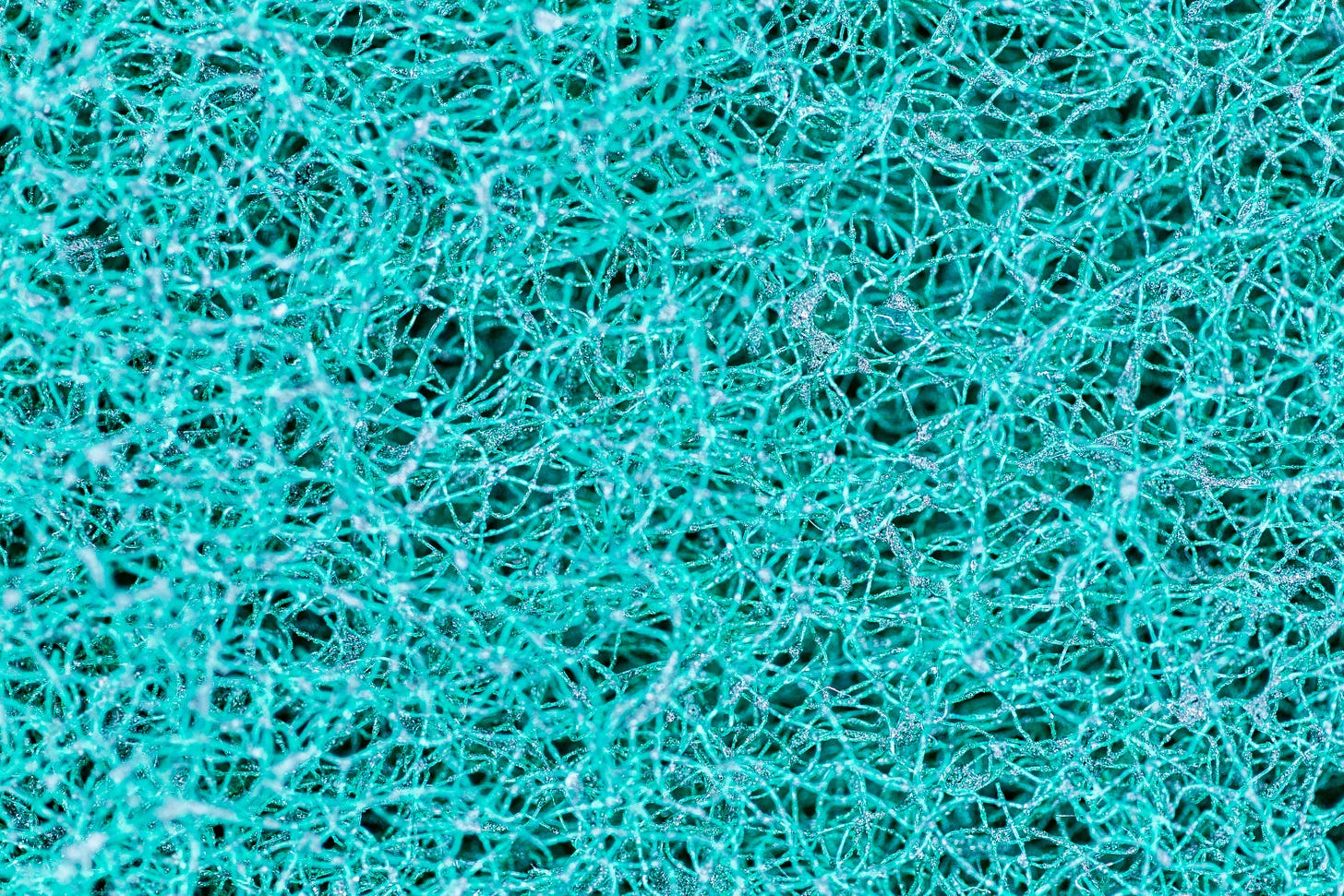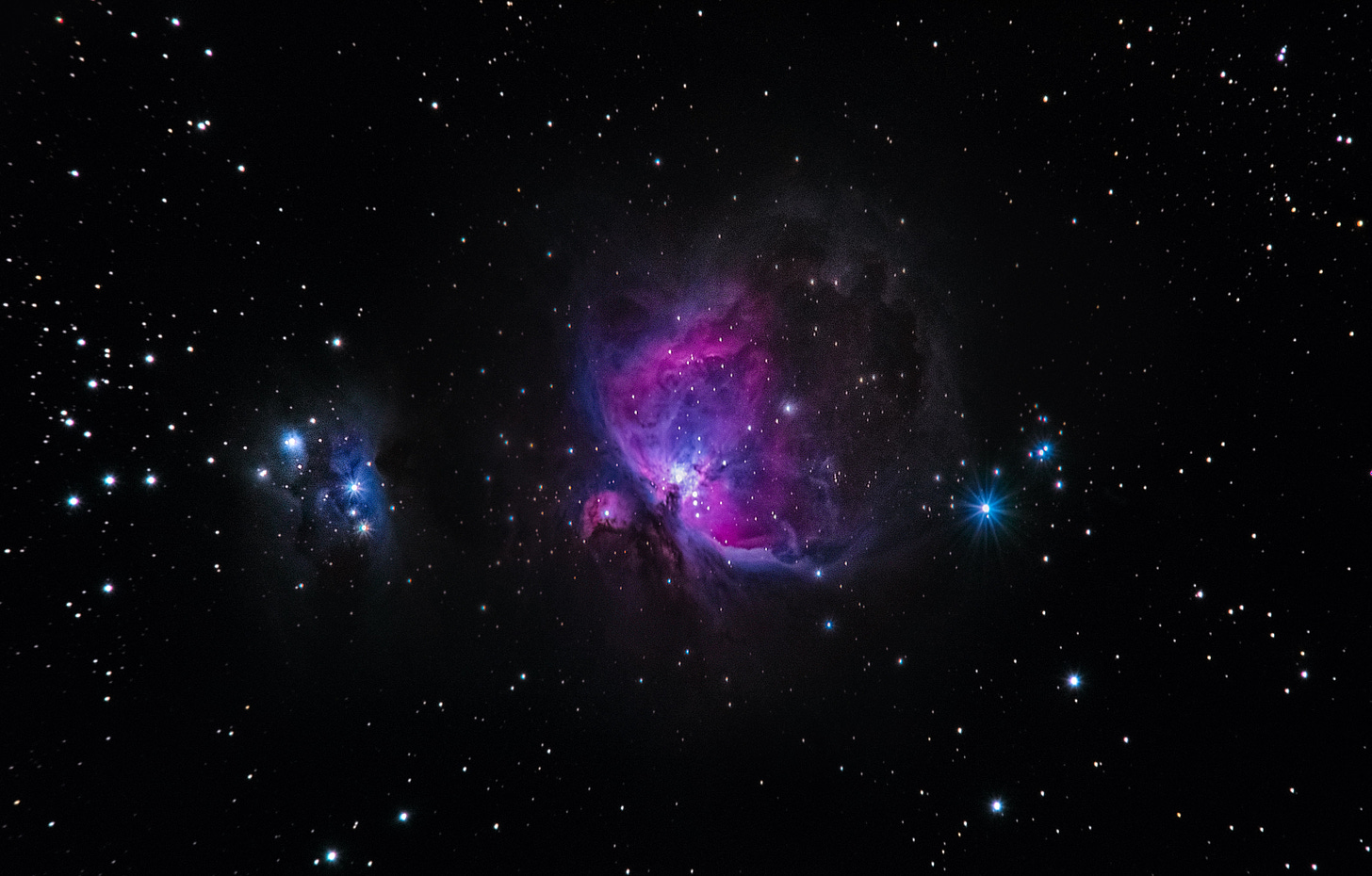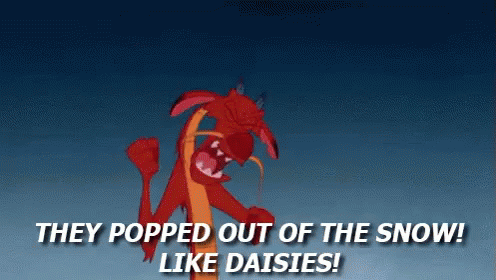Complex Adaptive Systems: Part 1
Understanding Increasing Complexity, And Our Ever Changing Reality

This is the first installment on a series where I will discuss what I have been thinking over for the better part of a year now. As I’ve patiently toiled over these concepts I want to first thank my friends Colin, CJ and Ryan for humoring me with the phone calls, texts and general conversation to refine my thoughts.
I hope you enjoy reading, as much as I have enjoyed thinking about these concepts.
If you do enjoy, please give this post a Like and Share with a friend. Please keep comments professional and thought-provoking.
I am finding myself amazed, consistently, at how silly our species can be. Truly.
Today, during the “Modern” Era, we live in a time where we seem to be getting weekly revelations on something, somehow, somewhere where we’ve been wrong about what we thought we knew. And yet, the vast majority of the population appears to believe that what is written between the covers of a textbook is doctrine. As if it is forever etched into the fabric of the universe as a true, unchallengeable fact. That there is no chance in Hell that we could manage to be wrong here as well. That our understanding could still be incomplete, if not flawed.
But… Mike… we have wi-fi and 1 terabyte storage that can fit into your pocket. Clearly we are the master of the universe, right?
The one lesson that history provides evidence for, more than any other, is: we do not know. Most of the “rules” we use to govern our lives are merely theories. Gravity, time, economics… all are just theories. We are guessing our way through life (as best we can, mind you) but we’re all walking around like we are kings & queens of truth.
Mankind perpetually comes incorrect about our understanding of our world more often than we come correct. Our species — in our dOmInAnT and sUpErIoR iNtElLiGeNcE — has thought that we were at the pinnacle of understanding more times than can be counted. And what followed? Great acts of evil when that confidence was challenged and tested by novel ways of thought (Galileo, Copernicus, the Malleus Maleficarum, the Crusades, Inquisitions, the rise of Christianity). Today is no different.
Technology gives us the capability to see further & deeper, to perform actions with greater control & precision. But, technology doesn’t improve the ways we view our world, nor our place in it. Technology can allow for greater visibility of our reality, but it does not help how we perceive it. Perception is very much subjective, and it can dictate our behavior by providing a lens that can taint, or accent, our views on daily life. It is through technology that we have devised a way to outsource our own technical evolution, but not the perceptual. Now, I do not want you to get me twisted here… I do not believe that technology is the sole key to human ascension, nor do I believe it to be our damnation. Technology is but a tool; in order to wield tools properly we have to identify and acknowledge the limitations that said technology has, so that we may work with and around these limitations so that we may overcome our own and charge on to a more prosperous future.
“There is much that science doesn’t understand, many mysteries still to be resolved... We are constantly stumbling on surprises. Yet some New Age and religious writers assert that scientists believe that ‘what they find is all there is.’ Scientists may reject mystic revelations for which there is no evidence except somebody’s say-so, but they hardly believe their knowledge of Nature to be complete.”
Carl Sagan, “The Demon-Haunted World, p.27”
Think On Your Sins
Time and time and time and time again we commit to one of the gravest sins of all: Vanity.
We gain momentum from a revelation in belief that grants us a lift in individual capability or power. Then, as time presses on, new ways of thought are brought to the forefront, often enabled by a combination of the most recent revelation and older more established truths that have lasted across the ages. If you want examples of these types of relationships you need look no further than what has been happening in the schools of thought in physiology, nutrition, psychology, and behavior. The thermostimulative effects on health, the powerful benefits of red meat consumption, the exposure to sunlight, and the grounding effects of touching bare feet to grass. Many schools of thought that were deemed “froo-froo” or fugazi are now being recognized to have legitimate regenerative effects on health and wellness, as well as the practices that were deemed to be more “brutish” such as extreme hot & cold exposure.
Through our Vanity, we engage in Hubris. In the aim of protecting this Hubris we engage in disingenuous debate and behavior to try and devalue the arguments and positions of those that would challenge our strongly held belief system. Because… if we can just silence the ones that are talking, their points of contention can not possibly be true. If we simply destroy the messenger, the truth cannot be revealed, and our thrones as kings & queens atop our pillars of truth cannot be challenged or stolen.
But the truth seekers persist, and the truth speakers grow in number. You can’t silence a message that resurfaces as aggressively as the Mongols did after the avalanche in Mulan – Mushu was terrified for a reason. So our belief system gets continuously challenged, and because we foolishly tethered our identities to our belief system; our Vanity ends up sundered.
And then… in our sundered Vanity, we turn to Wrath. For who could wound us so deeply as to not care about our fEeLiNgS while we are busy with our grandstanding, victimization and self-pedestalization. How could they not see that the established ways of thought were superior? that the systems with which we have benefited are beyond challenge, or reproach?
Who would dare to interrupt our Gluttony on the fleeting pleasures provided by the soft-porn peddlers of Instagram, SnapChat and TikTok? Who are they to inspire us? To suggest we shake ourselves of the iron grip of Sloth in order to seek health, strength, and sovereignty? To empower and uplift those community members and loved ones nearest and dearest to our hearts? To deliver the painful truths of our reality? With the intent of opening our eyes to our own misdoings, our own failings, so that we may develop ourselves and our offspring into the effective and powerful individuals that could be.
Across the ages we may have slowly matured and learned. But that learning (what small amount is actually accomplished) seems to always come at great cost. Only after terrible transgressions on individual human rights, do we realize the need to listen more to those small few who plant their feet upon sound data, based on logic & rational reasoning, while the rest of the world around them makes the decision to remain ignorant. Seemingly for the sake of simply avoiding change, regardless of if change is necessary.
Which is wrong.
We are far from being finished with our progression in special maturity, in our understanding of the machinations of our reality.
This brings us to the point of my writing here.
Complex Adaptive Systems
First we must have an introductory conversation around a dynamic that vast reaches of the population clearly fail to comprehend; complex adaptive systems. These systems are all around us, within us… they are us.
A complex adaptive system (CAS) is not a mechanism that is born of immaculate conception – they are developed, grown, evolved. A CAS is really just an aggregation of binary response mechanisms that are aiming for a desired range of operations, seeking homeostasis. For example, if you were to take a very simply engineered system, let’s say a thermostat, that completes a circuit at 23°C (74°F) so that it were to cut off the flow of heated air, and then you were to add another that performs the exact opposite function at 20°C, you have the makings of a CAS. Within this system there is already a number of binary options; opening flow of heated air, closing said flow, detecting room temperature, identifying a target temperature, closing a circuit at said target, and so on. Then there is a series of operations for precisely the opposite. At this rate you are already beginning to establish something that could develop into a CAS. You could continue to add sensors, circuits and mechanisms that aim to manage variables such as humidity, air quality, illumination, etc. The more variables that are detected and accounted for, the closer we get.
This type of variable management isn’t restricted to technology, or engineering. Life does this constantly. You do this constantly. Every millisecond of every moment of your life, since your conception, you have had these types of systems operating within you. Both consciously and subconsciously; moreso the latter than the former. Your parasympathetic nervous system is in charge of managing these kinds of inputs and outputs. But so are the individual cells of your body, they are reacting to environmental factors and stimuli, in order to provide the functions that allow us to breath, to digest our food, to move, to produce & yield ATP, and to think.
Now zoom out, and look at your local community. Each citizen that is performing a job in said community is acting in a not-so-dissimilar fashion from the cells within your body. Communities react to stimuli and variables together as the individuals also react; making a community a complex adaptive system. This also includes the economic portion of the community, which can be viewed as its own CAS, but it is still a CAS that plays a role within the broader CAS of the community as well. What this also means is that you can zoom out even further to the state & provincial levels, to the regional, the national, and all the way out to the global level.
We are but a world of complex adaptive systems, made up of complex adaptive systems, within a universe that is itself a complex and adaptive system.
Sensations and The Development of Consciousness
“The physical sensation of pleasure is a signal indicating that the organism is pursuing the right course of action. The physical sensation of pain is a warning signal of danger, indicating that the organism is pursuing the wrong course of action, that something is impairing the proper function of its body, which requires action to correct it. The best illustration of this can be seen in the rare, freak cases of children who are born without the capacity to experience physical pain; such children do not survive for long; they have no means of discovering what can injure them, no warning signals, and thus a minor cut can develop in to a deadly infection, or a major illness can remain undetected until it is too late to fight it.
Consciousness—for those living organisms which possess it—is the basic means of survival.”
Ayn Rand, “The Virtue of Selfishness,” p.18
Take the sensations of pain and pleasure. These are arguably the two most basal of sensations. How much thought have you contributed to how these developed senses came about? It was more than likely that, throughout the evolutionary timeline, randomly propagated genetic mutations developed a physiological system that resulted in the production of dopamine (or some dopaminergic-like relationship). Producing the sensations of euphoric bliss and arousal that we all know and love from our reward drug (this also requires the development of structures to receive the neurotransmitter that produces these sensations). Without understanding “the why,” simply knowing that [x] activity produced a sensation that was enjoyable (like feeling pleasure after eating, or intercourse), that creature is thereby incentivized (and later; conditioned) to seek that activity out again in the future.
Those organisms who experienced this chemical interaction experienced it with regards to activities that helped it survive to the point of reproduction, thus passing their coding instructions for their DNA on to the next generation. Where the random mutation machine thereby gets another attempt at fine-tuning life into more granular forms of specialization in the most fair way possible; pure—random—chance. Where new structures can be accidentally produced to perceive even greater forms of sensation, beyond pain & pleasure; joy, sadness, anger, frustration, contentment, wonder, confusion, and yes; love. Each one of these have persisted because, at some point across the ages, they have provided feedback, or states of mind, that had positive impacts on our ancestors’ survival and subsequent reproduction. The greater the amount of sensory information detected; the greater that can be analyzed, and perceived. Making for higher and higher forms of intelligence, intent, and consciousness. Allowing for continually specialized forms of life, that can then produce greater and greater strategies to not only survive, but thrive. Meaning for greater and greater achievements in specialization; meaning greater and greater leaps in efficiency.
These systems waste-not.

CAS’s Seek Efficiency
‘Waste,’ as far as information is concerned, is also a misconception. There is no such thing as “bad data.” There is data that does not fall within the desired ramifications or constraints, and there is data that is representing an incomplete picture. But there is no such thing as “bad information.” Information simply is. Information is a tool, just like a hammer or a nail. There is no such thing as ‘misinformation,’ this is a lie that society has picked up and started to run with. There is information, and then there are truths, and there are lies. But the nature of a truth and a lie is borne of the narrative with which the information is represented. Not the information itself. This is also why it is important for the layman to understand that statistics are not a panacea, they are not a holy grail of fact. Statistics can be manipulated, and often are, in order to portray any amalgamation of desired outcomes.
How many narratives, decisions, strategies, and election campaigns are driven with statistics? How many of these decisions are blindly adhered to, and followed, without healthy & proper criticism of the statistics used to argue a position?
An economy is another type of CAS. CASs can also be viewed as ecosystems. A body is an ecosystem, made up of individually motivated actors, or “organs,” or “cells,” that express themselves independently of their neighbors & peers, while also supporting and relying upon their neighbor(s) and the broader system itself. These individual players can be cognizant of their relationship to the broader system, or not. It does not change the nature of this relationship. Whether in a developed world or not, you likely go about your day with little direct reliance upon your neighbor, yet your neighbor is likely performing a job that provides value to society, and one that you likely depend upon in any 2nd… 3rd…4th, etc, orders of effect in disconnection from yourself due to being a part of that society (system).
CASs also rely on free market exchange of resources, the only regulating dynamic is that of natural selection. The reason this relationship is very important is that nature provides, reality simply is. Meaning, existence is a first-come, first-serve world — on the base level. Meaning that might will make right, in the beginning. However, when it comes to an organism that evolves to increased levels of consciousness, and mammalian life being largely of a social nature, these variables lead to a path of least resistance around developing a society. A support system. This is because within human social structures once the group gets to be of about 500 in number, the mighty portion (those that occupy the upper echelons of the social hierarchy) begin to prey upon the weaker participants; ultimately cannibalizing the system itself. This therefore promotes coordination and teamwork towards greater ends, increasing ease of life, and improving efficiencies, resulting in varying forms of societal organization (aka government). In order to organize with the aim of achieving greater levels of complexity, free markets and natural selection (between and within the organized social structures between humans) are absolutely necessary. Meaning establishing rule sets such as “don’t murder each other” but not going so far as to create legal monopolies such as those in the telecommunications industry in the United States — moderation goes a long way. Otherwise manipulating survivability (like legal monopolies) skews the efficiency of the system, and invites vulnerability and fragility later down the line.
The resources involved within CASs also need to be of quality resource density. The lower the density, the greater the inefficiency. For an example of this one would simply need to look at human physiology and nutrition. Food sources that are high in caloric density and low in nutrient density provide more problems to the health of the broader system than benefits, as a greater nutrient density provides greater utility diversity across a slew of mechanisms that promote the continued health of the CAS (the body). Therefore inputs to a CAS must be of the highest quality that is attainable. Whether this is in regards to whole foods such as fruit and beef, or minerals such as copper or silver, or monetary assets. The greater the complexity of a CAS, the greater the demand for the density of the resources consumed.

Input Integration
There’s one very important aspect when it comes to observing and understanding a CAS. Due to it being adaptive, when a new input is added to the system, that system as a whole must evolve. Exchange rates of resources within the CAS must shift in order to facilitate complete integration, let alone attempt it. Once integration is completed the ecosystem has reached a state of homeostasis, where balance is able to be maintained as all integrated nodes are supporting each other effectively and efficiently through intra-CAS resource exchange.
If the individual nodes of the CAS are not able to adapt and pivot to facilitate integration properly, then they are not fit for operation. What such an integration requires is a redistribution of resource allocation, which directly means that some nodes will benefit more while others… not as much. If that means some nodes will fail (die), then so be it. Such is the way of the world. This entails that bubbles (in the financial market sense) will develop. At which point the ecosystem of nodes within the CAS will experience ripples in their resource allocation. Meaning volatility. That oh so terrifying word to the world of finance.
Examples of CAS Maintenance in Nature
In studies of mice, it has been shown that thermoregulation takes into consideration variables beyond that of a cool or warm environment. In environments of more light saturation, the body temperatures of said mice were seen to maintain a cooler range, whereas in that of a darker environment these bodies were held at a more consistently warmer clip. Of even greater note, in my opinion, is the consideration of how these variables affected circadian rhythm; being in a darker, cooler environment seems to have an effect of allowing for their bodies to operate at the optimal temperature with a lesser need for adjustment to maintain the desired range. Just like keeping a datacenter in a consistently cooler environment will allow for much easier maintenance of optimal operational uptime.
That’s it for Part 1!
Like, Share and Subscribe for Part 2, where we’ll be leaning deeper into economics, as well as the esoteric and philosophical ramifications of complex adaptive systems.


